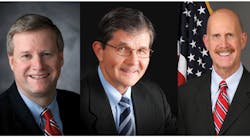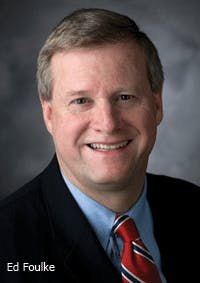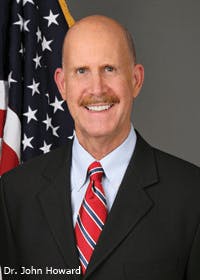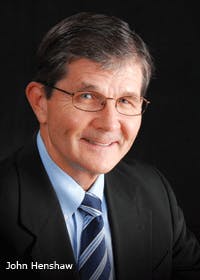At a Sept. 12 government insiders panel discussion at the America’s Safest Companies Conference in Chicago, former OSHA administrators Ed Foulke and John Henshaw and NIOSH Director Dr. John Howard discussed employee engagement, the cost benefits of safety, the business implications of worker health and additional occupational safety and health challenges.
Moderated by EHS Today Editor-in-Chief Sandy Smith and presented to hundreds of ASC Conference attendees, the panel discussion covered topics including the changing health and wellness landscape for U.S. employees, worker engagement, the cost benefit of safety and the importance of approaching occupational safety and health holistically.
“Safety is a series of destinations, but we’re on a continual path to improve safety. You never get to an end goal,” said Ed Foulke, partner with Fisher & Phillips LLP, who served as the assistant secretary of labor for OSHA from 2006-2008.
Occupational Health Outlook
“This is your incoming work force, the people who are going to be working for you. They’re going to be bringing pre-existing illnesses [related to obesity], which will impact your health care costs,” Foulke said. “Because of their physical characteristics, they’re going to get injured quicker, more frequently, and recovery time will be longer.”
Employees’ sedentary lifestyles and lack of physical fitness will impact more than their own health – it may also compromise a company’s viability and ability to succeed. Foulke warned that the health problems of the younger generation will “dramatically impact” companies’ workers’ compensation costs, and he warned that no company will be exempt.
“Unless companies have a comprehensive safety and health managements system, which includes a wellness program, you’ll be out of business,” Foulke said. “There’s no middle ground on this issue.”
“Health care costs drive employers in the United States. It’s just the way it is,” added Howard. “How the health care stuff works out is going to be a very big deal to companies.”
Total Worker Health
“Often, we separate out the occupational and non-occupational,” Howard said. “Whether the employee is home because of work-related injury or personal health issue, it doesn’t matter, the worker is not productive. To me, the biggest challenge for the 21st century is to bring all that together with the same responsible entity in the organization, which is the people who do [occupational] safety and health.”
NIOSH, Howard said, is working to address issues impacting the American work force with its Total Worker Health program, which aims to integrate occupational health and safety protection with health promotion.
“This is a large, overarching issue that we at NIOSH find important,” Howard said.
Employee Engagement
Henshaw, who served as the assistant secretary of labor for OSHA 2001-2004, repeatedly stressed the importance of the cost benefits of occupational safety – calling himself, at one point, “a realist.”
The biggest challenges, Henshaw continued, include engaging the work force and getting company CFOs involved in safety meetings. Above all, EHS professionals must demonstrate the value of safety programs, both to company leadership and to help engage the workers themselves.
“If there’s no value in it, why do we want to do it?” Henshaw asked. “ We have to take the time to engage every individual and show that we value their input, their understanding, their appreciation of their job ... We have to make sure every individual in the workplace is engaged.”
The goal, Henshaw said, is to encourage workers to truly own their safety and health instead of just following rules.
“There are no magic bullets,” he added. “You can’t set a management program up without engagement. It has to be internally grown.”



